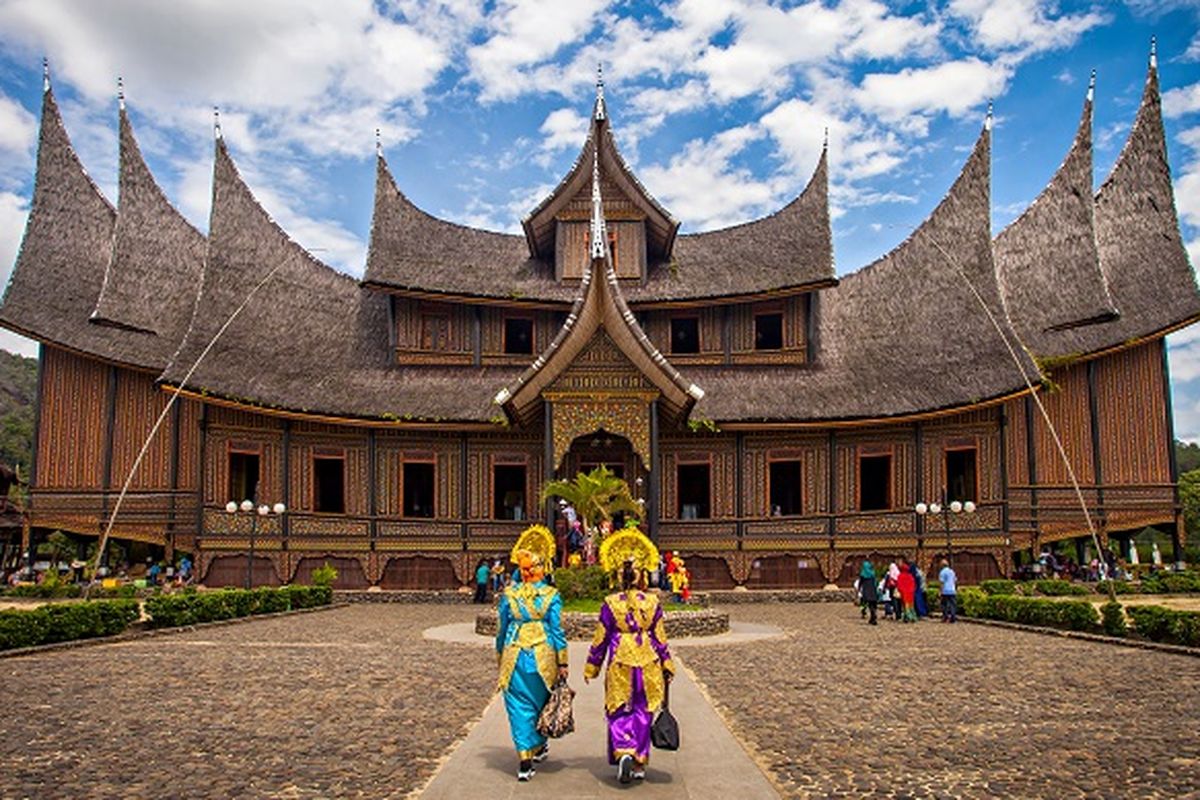Striding the Corridors of an Iconic West Sumatra Palace

JAKARTA, KOMPAS.com – The procession of men and women of all ages wended their way into the Istano Basa Pagaruyung in West Sumatra’s Tanah Datar Regency. Sporting the vivid red, black and gold threads of traditional Minangkabau or West Sumatran clothing, the group entered the royal palace with their respective roles.
The women took traditional foods into the long wooden corridor, while the young men delivered a steady drumbeat from traditional drums to enliven the day.
As on other occasions, the palace and museum were decked out to welcome guests of honor, such as bicyclists racing in the annual Tour de Singkarak.
The most recent VIP to enter the Pagaruyung’s hallowed corridors is none other than celebrity chef Gordon Ramsay, who was received by Indonesian culinary wizard William Wongso.
Like other guests of honor, the two tucked into a bajamba traditional banquet of Minangkabau or West Sumatra specialties, including rendang beef stew.
Their interaction before the massive wooden structure formed part of the latest episode of Ramsay’s documentary Gordon Ramsay: Uncharted.
Iconic yet mysterious
The Pagaruyung royal palace’s facade has a grandeur reminiscent of Versailles in France or Buckingham Palace in Great Britain. However, little is known about its origins or the kings who built the structure, except that it was constructed in the 17th century.
Also read: Gordon Ramsay's Uncharted West Sumatra Culinary Adventure
In a June 22, 2013 Kompas.com article titled “Pagaruyung, Simbol Perekat Nusantara” (Pagaruyung, A Unifying Symbol of the Indonesian Archipelago), Andalas University history lecturer Muhammad Nur hinted at the origins of the palace’s name.
“Pagaruyung is probably derived from two words, paga [modern day Indonesian pagar or fence], and ruyung, a branch of a palm tree that has been hardened by age,” he said.
“While the Pagaruyung kingdom was founded by King Adityawarman as the Malayapura kingdom, no one is certain if he founded Pagaruyung Palace. What is for certain is that the palace’s current site is from Sultan Alif’s reign in the 17th century.”
 Welcoming Gordon Ramsay at Pagaruyung Palace
Welcoming Gordon Ramsay at Pagaruyung PalaceA wooden wonder
While the palace’s stunning wooden craftsmanship is admirable, its vulnerability to fire is no help for historians struggling to find out its history.
Also read: Tourism Ministry Plans to Reopen Indonesia's Nature Attractions due to Low Covid-19 Risk
The palace was burned and rebuilt three times in 1837, 1966, and most recently in 2007.
While the current palace might be a replica, the craftsmanship is no less dazzling for its design and symbolism.
The palace’s multigabled design and iconic buffalo shaped roof make it the epitome of a Minangkabau traditional house. The building is also rife with symbolism, among them the more than 60 carvings symbolizing Minangkabau’s philosophy and culture.
Pagaruyung Palace also housed spears, swords, and firearms from the kingdom’s struggle against the Dutch in the 19th century.
As a museum, the palace also rents or loans to visitors or guests of honor such as Ramsay or bicyclists in the Tour de Singkarak. But regardless of the occasion, Pagaruyung Palace is worth a visit.
(Writer: Nicholas Ryan Aditya | Editor : Kahfi Dirga Cahya)
Source:
Simak breaking news dan berita pilihan kami langsung di ponselmu. Pilih saluran andalanmu akses berita Kompas.com WhatsApp Channel : https://www.whatsapp.com/channel/0029VaFPbedBPzjZrk13HO3D. Pastikan kamu sudah install aplikasi WhatsApp ya.






























